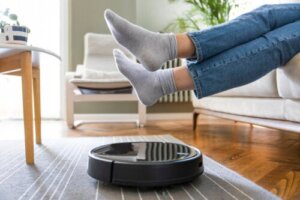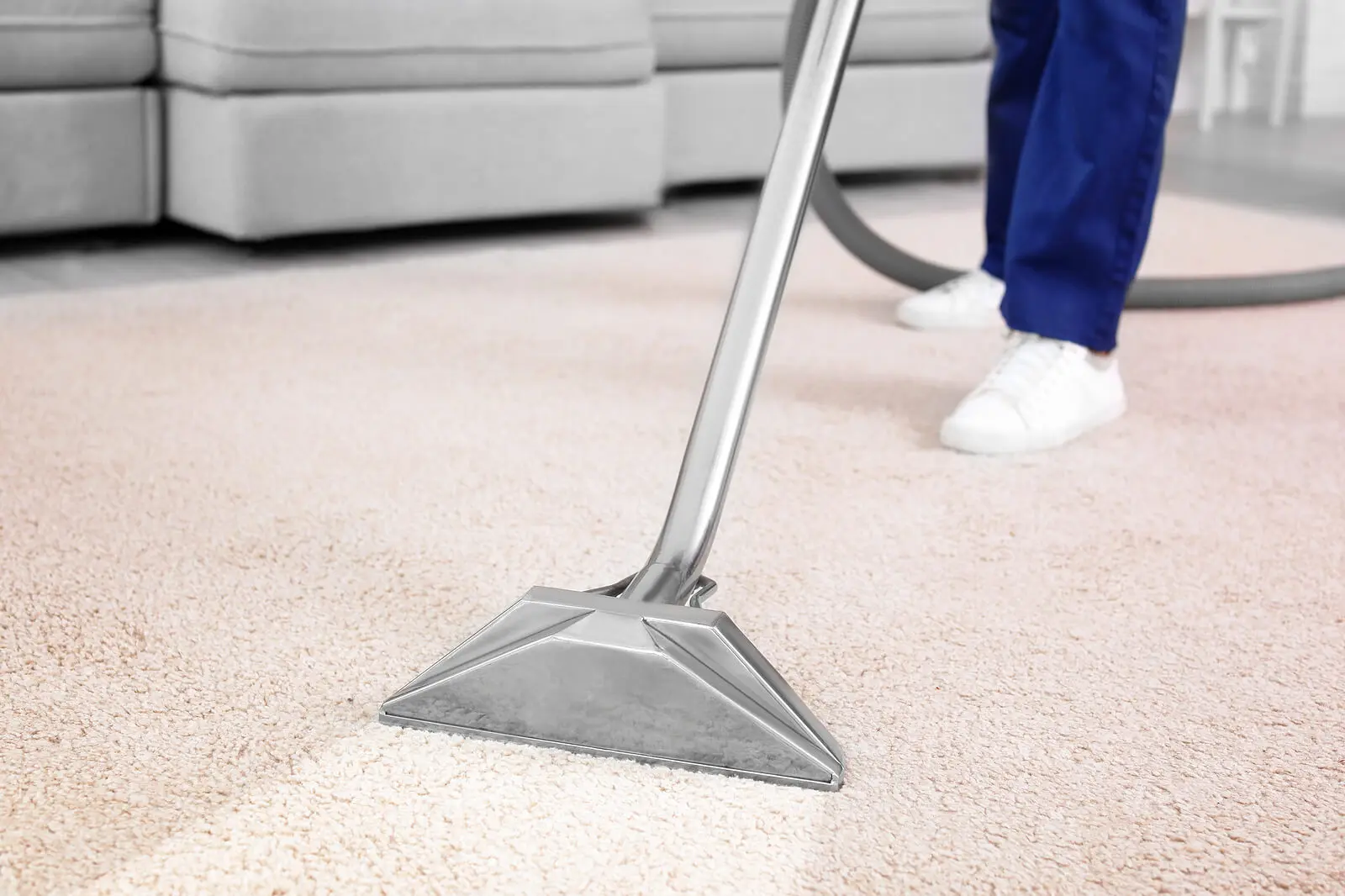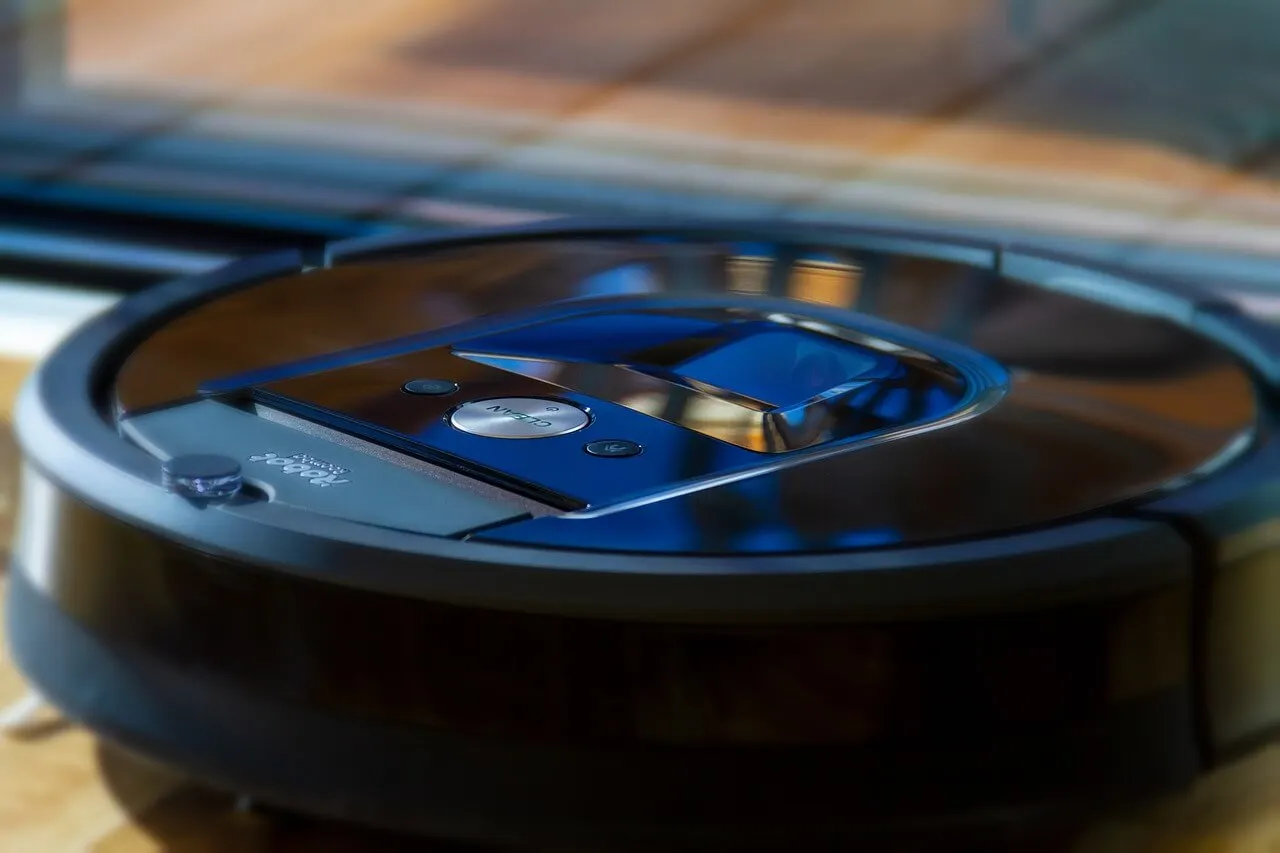Robot Vacuum Cleaner: Advantages and Disadvantages

The robot vacuum cleaner is one of the first devices to break into homes. As you may already know, humans have been using it for a while. This technology can certainly simplify everyday tasks.
Its use is becoming more and more widespread, and there are already models available for all budgets. However, it’s a good idea to know the advantages and disadvantages they have before acquiring one.
There’s no doubt that automation, reduced workload, and time savings are very convenient for day-to-day use. However, like any household appliance, it has some disadvantages that should also be taken into account.
What is a robot vacuum cleaner and how does it work?
This is a device that performs the suction of dirt on the floors autonomously. It generally has a circular shape. Thanks to its internal battery, it doesn’t depend on electrical installation barring its charging, and comes integrated with cleaning programs to operate independently.
Its effectiveness is based on internal sensors that identify navigation areas, obstacles, and surfaces. They usually contain two brushes, a side brush, and a rotating brush. Depending on the model, the rotating brushes can reach into complex corners. In addition, the more advanced their technology, the more they can be controlled by smartphone apps.
The latest models include artificial intelligence, which makes them more effective at identifying surfaces and obstacles. They may also have an integrated scrubbing function. Although robot vacuums haven’t yet replaced a thorough home cleaning by hand, these appliances are increasingly successful due to the savings in time and electrical energy.
Find out: What Is Cleanliness and How Can You Apply it to Your Home?
The evolution of robot vacuum cleaners
The electric cleaning of surfaces started at the beginning of the 20th century with the first vacuum cleaners. At first, the inventors wanted them for industrial use, but the appliance is now a household appliance in many homes.
The advance of technology allowed thinking, around the 1980s, of autonomous models. The first device of this type is the Trilobite from the manufacturer Electrolux, launched in 1996. But the one that achieved real commercial success was iRobot‘s Roomba, released in 2002.
From that moment on, a dispute between different manufacturers and models began. The first prototypes included numerous failures in identifying obstacles, so it was common for them to run into walls and columns or fall down stairs.
With progressive improvements and the launch of versions more accessible to all budgets, the robot vacuum cleaner became a household appliance of choice for thousands of users around the world. According to figures published by the International Federation of Robotics, sales of these devices for home use grew by 5% in 2020.

Advantages of the robot vacuum cleaner
These autonomous vacuum cleaner appliances have multiple advantages, as imagined in the prototypes of the past. Today they are a reality that many people choose to make everyday tasks easier.
They save time and effort
The most obvious advantage of this appliance, and the reason why it’s present in thousands of homes, is the time saved in cleaning. Although they do not perform deep sanitizing, they are very useful for everyday sweeping and dust absorption.
Some models even include scrubbing and are effective for pet hair. A study published in the Journal of Environmental Health highlighted the superior efficiency of these appliances over manual cleaning in terms of dirt residue.
Lower energy consumption
In general, these appliances have a lower energy consumption than regular vacuum cleaners. It’s possible that they require a little more of an up-front investment, but this is compensated by the subsequent optimization of electrical energy.
However, if used to complement and not replace conventional vacuum cleaners, the overall household consumption is increased. This is indicated by a study published in the journal of Science.
Autonomy
Not only is it possible to activate the device to run its cleaning program while other tasks are being performed, but a robot vacuum is also capable of detecting when its battery is low. In this case, it automatically returns to the charging base and, after recharging, continues with the programmed task.
They adapt to different surfaces
Robot vacuum cleaners are programmed to remove as much dust, dust mites, and other allergens that tend to circulate on different surfaces in the home as possible. At this point, those that include a HEPA filter are the most efficient.
In addition, they recognize different textures, such as carpets, ceramics, or wood. Thus, they increase or reduce their power autonomously, depending on the difficulty.
This condition makes them useful in both indoor and outdoor environments. With the progressive improvement of the models, they’re increasingly intelligent to detect and avoid different obstacles within the cleaning circuit. This is demonstrated by a study published in the journal Science and Technology.
We think you may also like to read: Living with Dust Allergy
Ease of use and control
Knowing the functions of these household appliances is very simple. Simply follow the manufacturer’s instructions to learn how to use them quickly. Once set up, they have different activation options.
In addition to manual controls, you can control some appliances from a mobile app or with wireless control. You can even purchase models that are compatible with voice assistants, such as Siri, Alexa, or Google Assistant.
They’re easy to store
Another advantage of the robot vacuum cleaner over regular vacuum cleaners is its small size. This condition makes it convenient to store in the closet or under the bed, something unthinkable with the old cleaners. In addition, it can reach corners that are very difficult for other appliances to reach.

The disadvantages of the robot vacuum cleaner
Despite its many advantages, no household appliance is perfect. Robot vacuum cleaners have some disadvantages to take into account when purchasing them:
- Initial investment: In general, they are more expensive than regular vacuum cleaners. However, you can recoup the investment in energy savings.
- Liquids: Most models don’t absorb liquids.
- Sound: Its noise can be annoying. However, it’s possible to leave it programmed to clean when no one is at home.
- Maintenance: It’s necessary to perform some maintenance actions for the appliance to work optimally. Changing the filter and cleaning the brushes are the most important. Also, you must empty the tank frequently.
Is it a good idea to use a robot vacuum cleaner?
The decision depends on several factors, such as the size of the rooms, the accessibility of the corners, and, above all, your budget. In general, they’re very effective, especially for homes with spaces that are difficult to access with regular-sized vacuum cleaners. They’re also great for places with pets, since frequent automated cleaning helps keep surfaces free of hair.
All cited sources were thoroughly reviewed by our team to ensure their quality, reliability, currency, and validity. The bibliography of this article was considered reliable and of academic or scientific accuracy.
- Andrade Salazar MT, Bastidas Chalan RV, Benavides Astudillo DE, Núñez Agurto AD. Propuesta de prototipo de robot aspiradora de bajo costo y alta tecnología aplicado a procesos de limpieza de baja escala. cyt [Internet]. 30 de junio de 2020 [citado 8 de enero de 2023];13(1):105-12. Disponible en: https://revistas.uteq.edu.ec/index.php/cyt/article/view/358
- Asafa, TB, Afonja, TM, Olaniyan, EA y Alade, HO (2018). Desarrollo de un robot aspirador. Revista de ingeniería de Alexandria , 57 (4), 2911–2920. https://doi.org/10.1016/j.aej.2018.07.005
- Larissa Nicholls, Yolande Strengers, Robotic vacuum cleaners save energy? Raising cleanliness conventions and energy demand in Australian households with smart home technologies, Energy Research & Social Science, Volume 50, 2019, Pages 73-81. Available in: https://doi.org/10.1016/j.erss.2018.11.019
- Polonini, Hudson et al. “Efficacy of an Automated Robotic Cleaning Device for Compounding Pharmacies.” International journal of pharmaceutical compounding vol. 24,5 (2020): 426-433. Disponible en: https://pubmed.ncbi.nlm.nih.gov/32886642/
- Smestad, Lisa et al. “Machine Versus Man: Can Robotic Mops Clean to Lead Safety Standards?.” Journal of environmental health vol. 79,2 (2016): 8-12. Disponible en: https://pubmed.ncbi.nlm.nih.gov/29115806/
- Vaussard, Florian & Fink, Julia & Bauwens, Valérie & Retornaz, Philippe & Hamel, David & Dillenbourg, Pierre & Mondada, Francesco. (2013). Lessons Learned from Robotic Vacuum Cleaners Entering in the Home Ecosystem. Robotics and Autonomous Systems. 62. Disponible en: https://www.sciencedirect.com/science/article/abs/pii/S0921889013001899?via%3Dihub#preview-section-snippets
This text is provided for informational purposes only and does not replace consultation with a professional. If in doubt, consult your specialist.








